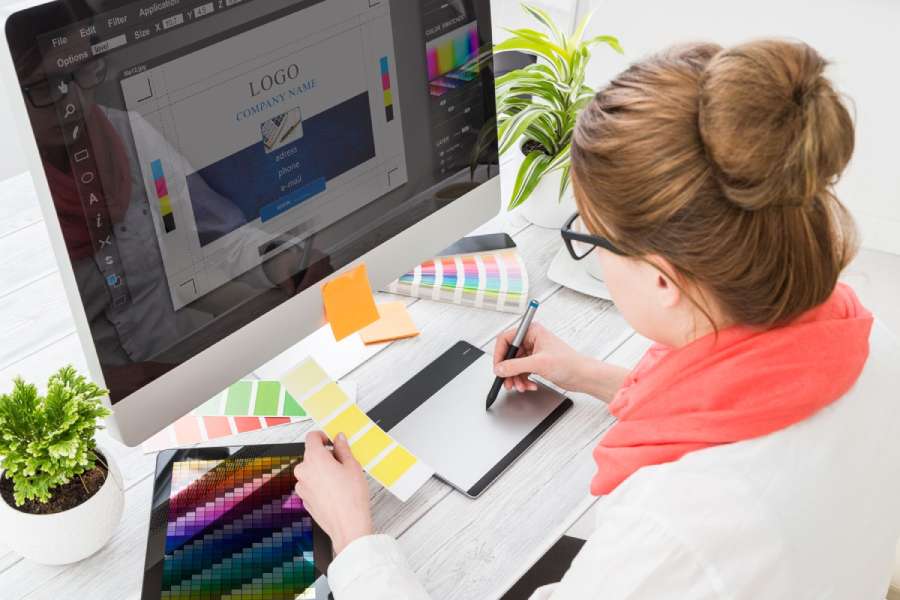Best Selling Products
Effective Learning Path for Beginners in Design
Nội dung
You are a beginner with no solid background in art or technology, but learning design is still completely accessible if you have a clear learning path and strategy.

Design is a creative field, combining art and technology, requiring learners to have patience, perseverance and passion. Even if you are a beginner, without a solid foundation in art or technology, learning design is still completely accessible if you have a clear and strategic learning path. Below is a basic design learning path for beginners, helping you gradually get acquainted and develop design skills effectively.
The timeless principles of design you must know
When learning design, whether you are a beginner or have some experience, it is very important to master the basic principles. These principles help you create harmonious, effective and accessible design products for your audience. Here are some basic principles when learning design:
Balance
Balance in design helps distribute elements evenly in a composition, creating harmony and pleasing to the viewer. There are two main types of balance:
Symmetrical balance: Elements in a design are arranged symmetrically around a central axis.
Asymmetrical balance: Elements have different weights but still feel stable thanks to the proper distribution of space and image.
Emphasis

@old
Emphasis is the act of creating a point of interest in a design that draws the viewer's attention. This can be done through the use of color, size, or placement of elements. Emphasis helps direct the viewer's attention to the most important message or part of the design.
Harmony
Harmony is the arrangement of design elements so that they work together in a harmonious and pleasing way. This can be achieved through the use of complementary colors, appropriate fonts, and similar images. Harmony helps a design look smooth and not cluttered.
Contrast
Contrast creates differences between design elements, helping to highlight important parts and create interest. For example, using contrasting colors (like black and white) or differences in size and shape will increase the clarity and recognition of the design.
Repetition
Repetition is the consistent use of design elements such as color, shape, or font throughout a design. This not only creates unity and uniformity, but also helps reinforce the brand or message in the eyes of the viewer.
Proportion
Proportion and scale involve arranging elements in a design so that they have a logical relationship to one another. Elements that are too large or too small in relation to the rest can create an imbalance and affect the aesthetic of the design.
Negative Space
Negative space, also known as empty space, is the space around elements in a design. Using negative space wisely helps highlight important elements and prevents the design from becoming “overcrowded,” creating a comfortable viewing experience for the viewer.
Simplicity
Simplicity is one of the most important principles in design. The simpler the design, the easier it is to understand and approach. Avoid complexity and adding too many unnecessary elements, as they can distract the viewer's attention from the main message.

Navigation (Visual Hierarchy)
Navigation is the arrangement of design elements so that the viewer moves naturally from the most important to the less important. This can be achieved through the use of size, color, position, and other design elements to guide the viewer.
Creativity
Finally, creativity is an essential element in design. Experiment with new ideas, break the rules sometimes to create unique and attractive design products. Creativity helps your design stand out and attract attention.
Design learning path you definitely can't miss
Mastering the basic principles when learning design will help you create beautiful, effective and accessible products. These principles not only make your designs professional but also help viewers easily receive the message you want to convey. However, in addition to the principles, you need to understand and apply correctly and sufficiently the roadmap of a design course.
Step 1: Get Familiar with Design Basics
Before you jump into using design software, you need to understand basic design concepts, such as color, geometry, proportion, space, contrast, and design principles. Start by learning:
Design Principles: Includes balance, emphasis, harmony, and contrast between elements in a composition.
Color Theory: Understanding color palettes, color combinations, and the impact of color in design.
Fonts and Typography: Learn how to use and combine fonts for harmony and readability.
You can find free courses or books on design theory to get a solid grasp of these concepts before diving into practical tools.
Step 2: Get familiar with design software

Once you understand the basic principles of design, the next step is to learn how to use design software. For beginners, some popular and accessible software include:
Adobe Photoshop: This is the most popular graphic design software, suitable for image editing, book cover design, posters, banners, etc.
Adobe Illustrator: For those who want to learn vector graphic design, helping to create logos, icons, or illustrations.
Canva: An easy-to-use online design tool for beginners that doesn't require too many technical skills, but still allows you to create impressive designs.
Take some time to familiarize yourself with the interface, basic software tools, and practice with simple exercises like creating posters, banners, or invitations.
Step 3: Learn from real projects
To improve your design skills, you need to practice and learn from real projects. Do design exercises from easy to difficult, such as:
Logo Design: Start by designing a simple logo for your business or group. This will help you understand how to choose colors, fonts, and shapes that fit your brand.
Poster Design: Try creating an event poster with visual elements, text, and color.
Website or App Design: Once you are more confident with your basic design skills, you can try your hand at website or app interface design.
By practicing through real projects, you will learn how to solve design problems, thereby improving your creative skills and ability to find suitable solutions.
Step 4: Learn about UI/UX design
Once you are confident with your basic design skills, the next step is to learn about user interface (UI) and user experience (UX) design. This is an important area of web and app design where you not only create beautiful products but also ensure convenience and ease of use for users.
UI Design: Focuses on creating beautiful, easy to understand, and interactive user interfaces.
UX Design: Ensures that users have a smooth experience while using the product, thereby improving user satisfaction and growth.
Tools like Sketch, Figma, or Adobe XD will help you practice UI/UX design effectively.

Step 5: Learn from design resources and communities
One of the fastest ways to improve your design is to learn from the design community and quality resources. You can join design groups and forums, such as:
Behance: Where designers share their projects.
Dribbble: A design community known for creative projects.
YouTube: There are thousands of design tutorial videos from basic to advanced.
Joining these communities will help you exchange experiences, get feedback, and stay updated on the latest design trends.
Step 6: Keep improving and innovating
Finally, design is a process of continuous learning and innovation. After each project, review your work, get feedback from others, and look for ways to improve. Don’t be afraid to experiment with new design styles, different tools, and always be creative to create unique products.
SADESIGN specializes in providing quality, low-cost design software.

SADESIGN specializes in providing low-cost design software that ensures superior quality, helping users easily access professional design tools without worrying about costs. These software are optimized to meet basic to advanced design needs, suitable for different users, from individuals to businesses. With powerful features and a friendly interface, SA DESIGN helps users create impressive design products while still saving costs.
SA DESIGN is committed to providing easy-to-use, efficient and fully functional design software, from graphic design, video editing to user interface design (UI/UX). With reasonable prices, SA DESIGN creates opportunities for everyone, especially beginners or small businesses, to access professional design tools without too much investment. SA DESIGN software is not only cost-effective but also optimized for high performance, helping users work quickly and achieve the best results in a short time.
Conclude
The design learning path for beginners is not a short journey, but with perseverance and passion, you will progress. By building a solid foundation, practicing through real projects and learning from the community, you will not only be able to become a good designer but also be able to create unique, creative and valuable products.












































